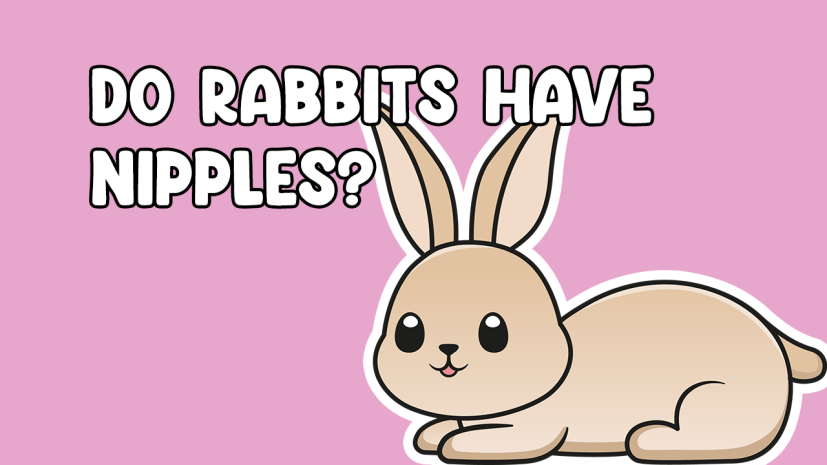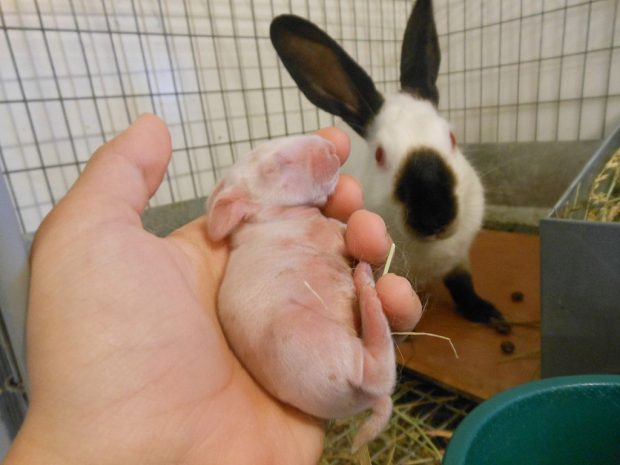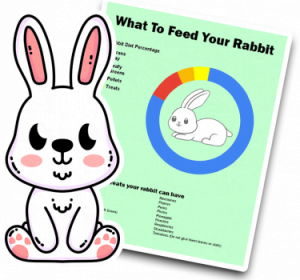
This comprehensive post aims to shed light on the topic of if rabbits have nipples and what their function is. We will be exploring the existence and significance of nipples in rabbits from the perspective of a professional rabbit owner and carer.
Yes, rabbits do have nipples! Like all mammals, female rabbits possess nipples as part of their mammary glands. These nipples play a vital role in the reproductive and nurturing processes. However, it’s not just female rabbits that have nipples. Male rabbits, too, have nipples, albeit less developed and noticeable than their female counterparts.
Rabbits belonging to the family Leporidae, are small mammals known for their long ears. As herbivores, they inhabit various ecosystems worldwide, from forests to grasslands. As mammals, rabbits share many features with other animals in their class, including the presence of nipples. This characteristic is not just a trivial detail but a crucial aspect of their reproductive and nurturing processes.
While both male and female rabbits have nipples, there are differences in their number and appearance. Female rabbits, particularly medium to large-sized ones, have between 8 to 10 nipples, which are more prominent than males. Male rabbits, on the other hand, have fewer and less noticeable nipples.
The presence of nipples on male rabbits might raise some questions. After all, if they don’t nurse their offspring, what is the function of these nipples? Interestingly, the nipples on male rabbits do serve a purpose. They are part of their reproductive system and play a role in transferring pheromones, chemical signals used in communication with females during courtship and mating, which is much more than we can say for humans!
During pregnancy, female rabbits experience various physiological changes to prepare for the arrival of their offspring. One such change involves the nipples. As the pregnancy progresses, the mammary glands in female rabbits develop, causing the nipples to enlarge. This enlargement is essential to meet the nutritional needs of the upcoming litter.
Once the baby rabbits, known as kits, are born, the enlarged nipples become vital in providing nourishment. The kits will instinctively nurse from their mother’s nipples to receive the necessary nutrients for growth and development. The mother’s milk is richer than cow’s milk and is specifically tailored to meet the kits’ needs.
Even when not pregnant, female rabbits still have nipples. These nipples remain a part of their anatomy and do not disappear or recede. However, outside of pregnancy and nursing, rabbit nipples do not play a significant role in female rabbits’ day-to-day life. They are a remnant of their mammalian heritage and are not actively used in non-reproductive periods.
Hand-feeding baby rabbits becomes necessary in the absence of a mother doe. A common practice involves using kitten milk replacement (KMR), a small pet nursing bottle, or a syringe without a needle. The KMR formula, mixed at a ratio of one tablespoon of powder to two tablespoons of water, is a substitute for the mother’s milk.
The feeding amount depends on the rabbit’s age, with 1-2 week-old rabbits typically receiving 4-5 cc of formula, and 3-6 week-old rabbits getting 10-15 cc. It’s recommended to feed baby rabbits twice a day, mimicking the feeding pattern of a mother rabbit in the wild.

Post-feeding, gently stroking the baby rabbit’s lower belly is advised to stimulate elimination. While using a nipple bottle might seem practical, it should only be used when the mother rabbit is unavailable. The mother’s milk is specifically tailored to meet the kits’ needs, and a nipple bottle cannot replicate this composition accurately. Hand feeding is a delicate process that requires patience and care, but with the right knowledge and tools, it can be a lifesaver for orphaned kits.
If you are in the position to feed a baby rabbit, we recommend getting a Feeding Nipple for a syringe or bottle.
Determining the sex of a rabbit, also known as “sexing,” can be a bit tricky, especially in young rabbits. However, with careful handling, it can be done. Here’s a general guide:
Prepare the Rabbit: Place the rabbit on its back on a soft surface. Be gentle and calm to avoid causing stress to the rabbit.
Locate the Genital Area: The genital area is located near the tail. Gently lift the tail to expose it.
Identify the Sex: In male rabbits, the penis appears as a tubular protrusion, which is usually surrounded by a round patch of fur. When gently pressed, the penis may emerge. Male rabbits also have testicles, but they may not be visible in very young rabbits as they descend around 10-12 weeks of age.
In female rabbits, the vulva appears as a slit or a line and is closer to the anus than in males. It’s usually more prominent and rounded compared to the male’s penis.
Remember, if you’re unsure, it’s always best to consult with a vet or a rabbit expert.
No, rabbits do not have both genders. Like most mammals, rabbits are either male or female. The term for animals that have both male and female reproductive organs is “hermaphrodite,” but this condition is extremely rare in rabbits. Typically, a rabbit will be born either male or female and will remain that sex for life.
Any confusion usually arises from the difficulty of accurately determining the sex of young rabbits. If there’s any doubt about a rabbit’s sex, it’s best to consult with a vet or a rabbit expert.

By entering your email address you agree to receive emails from Cottontailclub. We'll respect your privacy and you can unsubscribe at any time.